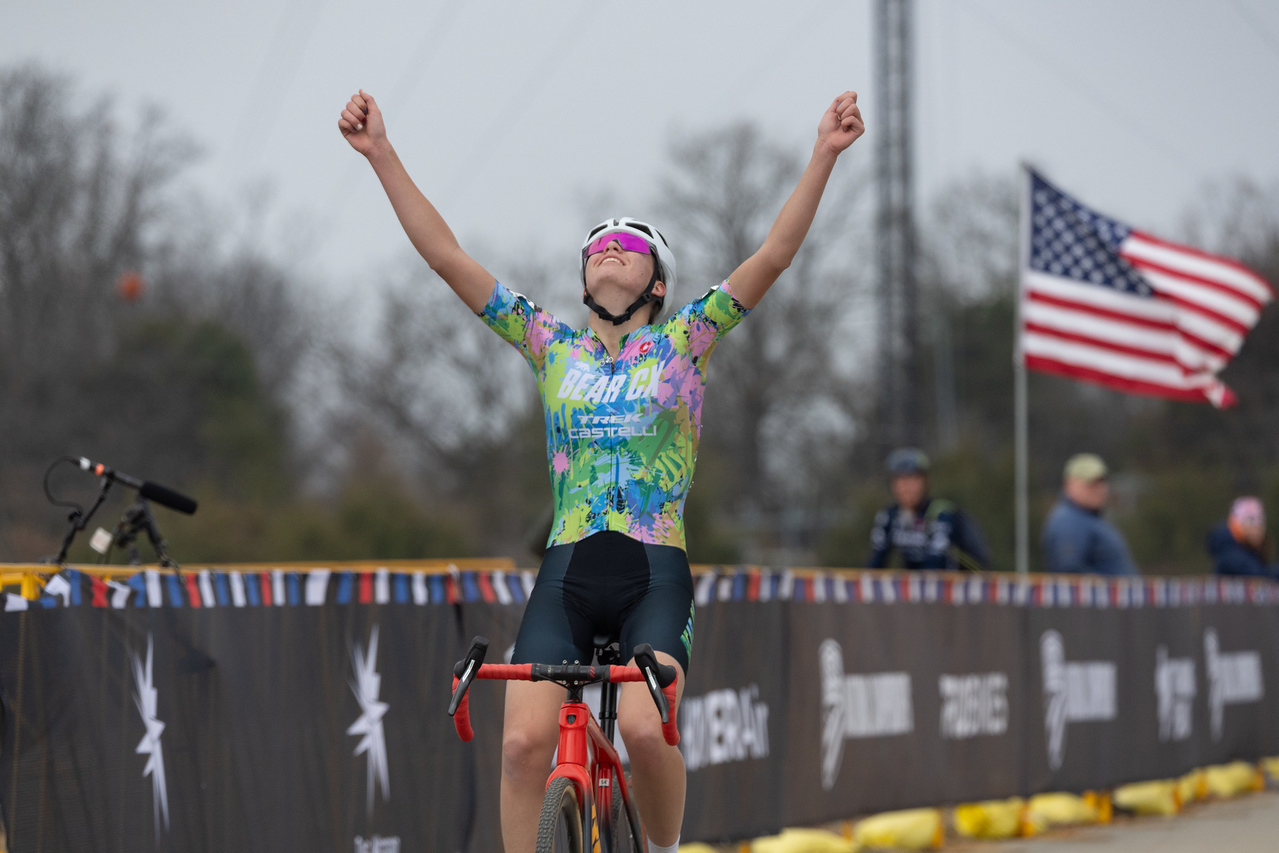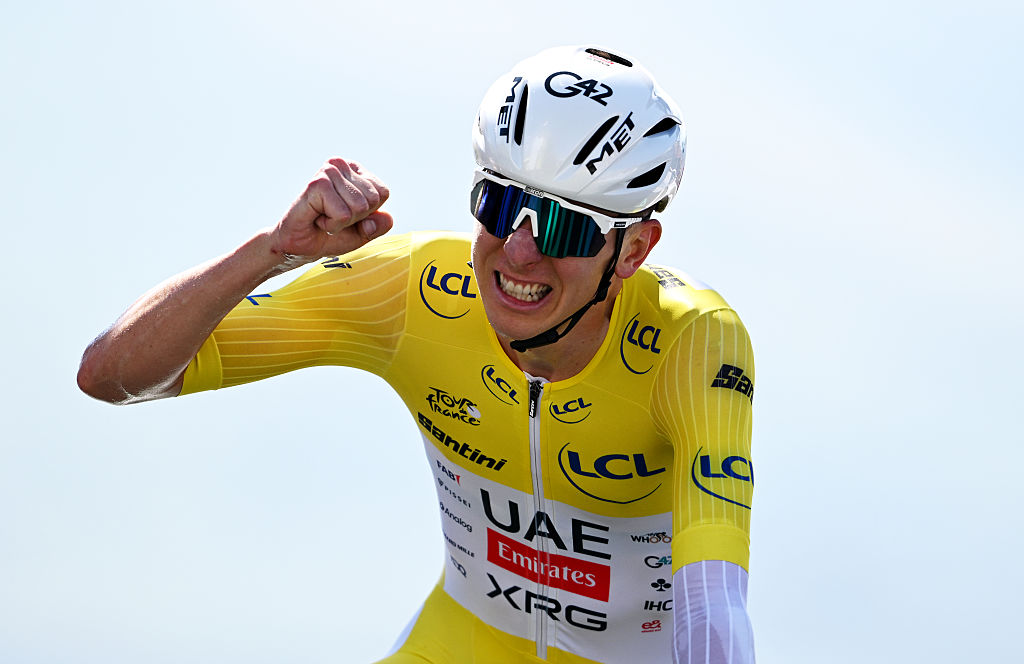Tour de France stage 17 preview: What Vingegaard, Pogačar face on Col de la Loze
Mammoth Alpine climb centrepiece of Tour's hardest stage

Four years ago, when it was announced that the 2020 Tour de France route would include a new monster Alpine climb called the Col de la Loze as a summit finish, such was its difficulty that the stage on which it featured was instantly labelled the toughest of the entire race.
The sheer length of the Loze, 28 kilometres at 6.5% but with the final five kilometres never less than 9%, was daunting enough. So too, was the freshly created and tarmacked cycle path that led to the Loze's summit via a cruelly undulating finale, including a ramp of 24% some two kilometres from the top. Then there was the Loze's peaking out at 2,304 metres above sea level, too.
That altitude was more than enough to become an important consideration, in itself - and perhaps help a Colombian like Miguel Angel López take the maiden win on the climb in the autumn of 2020 - and to ensure it was classified as that year's Souvenir Henri Desgrange, the highest point of the Tour. And all of the above remains true for this year's ascent of the Loze, too. But this time round, there's more to the stage itself as well: lots more.
Tackled for the second time in its history on Wednesday, while in 2020 the Loze was preceded by the venerable hors categorie Madeleine ascent, this time on Wednesday's 165 kilometre stage there's an even more formidable run-up: two cat. 1 climbs, the Col de la Saisies (km 28.4), and the Cormet de Roseland (km 66.7) and a cat. 2, the Côte de Longwy Km 110.4)
As if that were not enough, this time round the stage continues for another six kilometres after the Loze, barrelling off the summit towards a short, unclassified, very steep uphill finish to the altiport of Courchevel. Calling this the toughest day of the 2023 Tour, then, is a no-brainer. In fact, for all we've had the Tourmalet, the Puy de Dôme, the Grand Colombier and the Joux Plane, in terms of difficulty, nothing comes close to stage 17's 5000+ metres of vertical climbing.
While there are three other classified ascents and a nasty sting in the tail at Courchevel, it's the Loze and its utterly unconventional characteristics for an Alpine climb that proves the centrepiece of stage 17.
The first 15 kilometres, from the valley floor at Brides-les-Bains to the centre of the ski resort of Meribel are a relatively normal ascent for the French side of this mountain range, running on good, broad roads at gradients of 7 or 8%. So, too, are the next six kilometres or so as the climb heads up to a heliport. But, then at 1, 673 metres above sea level, and with seven kilometres to go, the Loze's cycle path begins - and a whole new climb starts.
The latest race content, interviews, features, reviews and expert buying guides, direct to your inbox!
As Cyclingnews reported in 2020, "There are hairpins, and there are longer straight sections, but above all there are nasty ramps that jut up almost vertiginously. This is far beyond the more irregular gradients found in the Pyrenees, and race director Christian Prudhomme has spoken of 'a series of walls'. He even name-dropped the Mur de Huy – the steep climb used at the end of Flèche Wallonne."
And as Tour de France director Christian Prudhomme also commented in 2020, "You go around a hairpin, and you're coming up to a 'wall', but you're on a false flat – it's a continual changing of rhythm."
"It's going to be an incredible finale because we've never had that kind of breaking-up of gradient, at that altitude. It doesn't exist – or it didn't, until now."
So that is what the Tour de France riders face on Wednesday: the key question now is - can Tadej Pogačar use such difficult terrain to bounce back after Tuesday's stinging TT defeat or will Jonas Vingegaard defend his lead of nearly two minutes and take another huge step towards winning the Tour again?
Pogačar remained notably upbeat despite such a major setback and if he started the Tour with the attitude that he has nothing to lose and that Vingegaard was the favourite, that is arguably even more the case at this point in the race. COVID-19 has not wreaked havoc amongst UAE like it did last year and Adam Yates, now third overall, represents a huge addition to their climbing firepower compared to 2022.
Yet for all it's easy to imagine Pogačar wants to throw caution to the wind, there can be no doubt that Jumbo-Visma and Vingegaard currently have the upper hand, and even a natural optimist like Joxean Fernández Matxin recognised that winning the Tour would be extremely difficult.
The brief history of the Loze in the Tour and the marginally longer role Courchevel have played don't exactly make for an optimistic outlook for Pogačar either. In 2020, he lost 15 seconds to another Jumbo-Visma rider in yellow - Primoz Roglic - and if he could bounce back in the Vosges, on this occasion the hilly 'Liège-Bastogne-Liège'-style stage is in no way as likely to produce an upset as the uphill time time trial to Planche des Belles Filles.
Courchevel has not produced major upsets in the past either. In 1997, when the Tour first used it as a finish, and French climbing specialist Richard Virenque took the victory, for all Roi Richard made his usual over-the-top victory salute at the finish, the truth was he was unable to shake off Jan Ullrich, the eventual Tour winner.
Another scenario is that Vingegaard manages to distance Pogačar but on Tuesday he was guarded about whatever plans Jumbo-Visma might be concocting for the second last mountain stage of the race. A third scenario is that (as has happened in three of the last four climbing stages in this year's Tour) Jumbo-Visma let a large break get away to fight for the day's honours and then concentrate on keeping Pogačar on as short a leash as possible.
Whatever the outcome, any stage featuring a climb as hard as the Col de la Loze is not to be trifled with, and in the third week of any Grand Tour, the gap that separates a strong performance from cracking can be getting perilously thin. Vingegaard may well have a much stronger grip on yellow, but until Wednesday's stage is over, neither he nor his team will be taking anything for granted.
Stage 17: Saint-Gervais Mont Blanc à Courchevel
Date: July 19, 2023
Distance: 184.9km
Stage type: Mountain
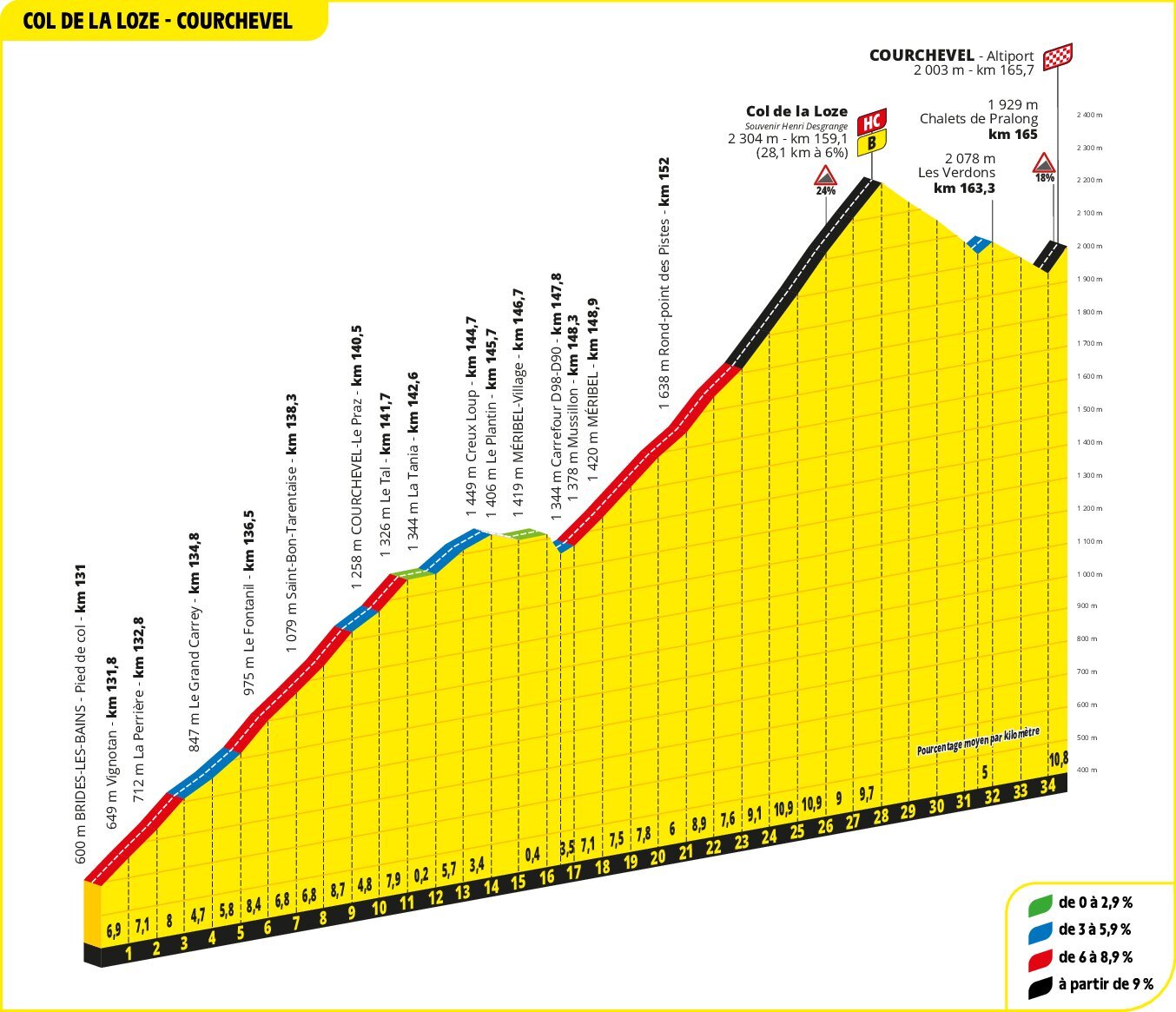
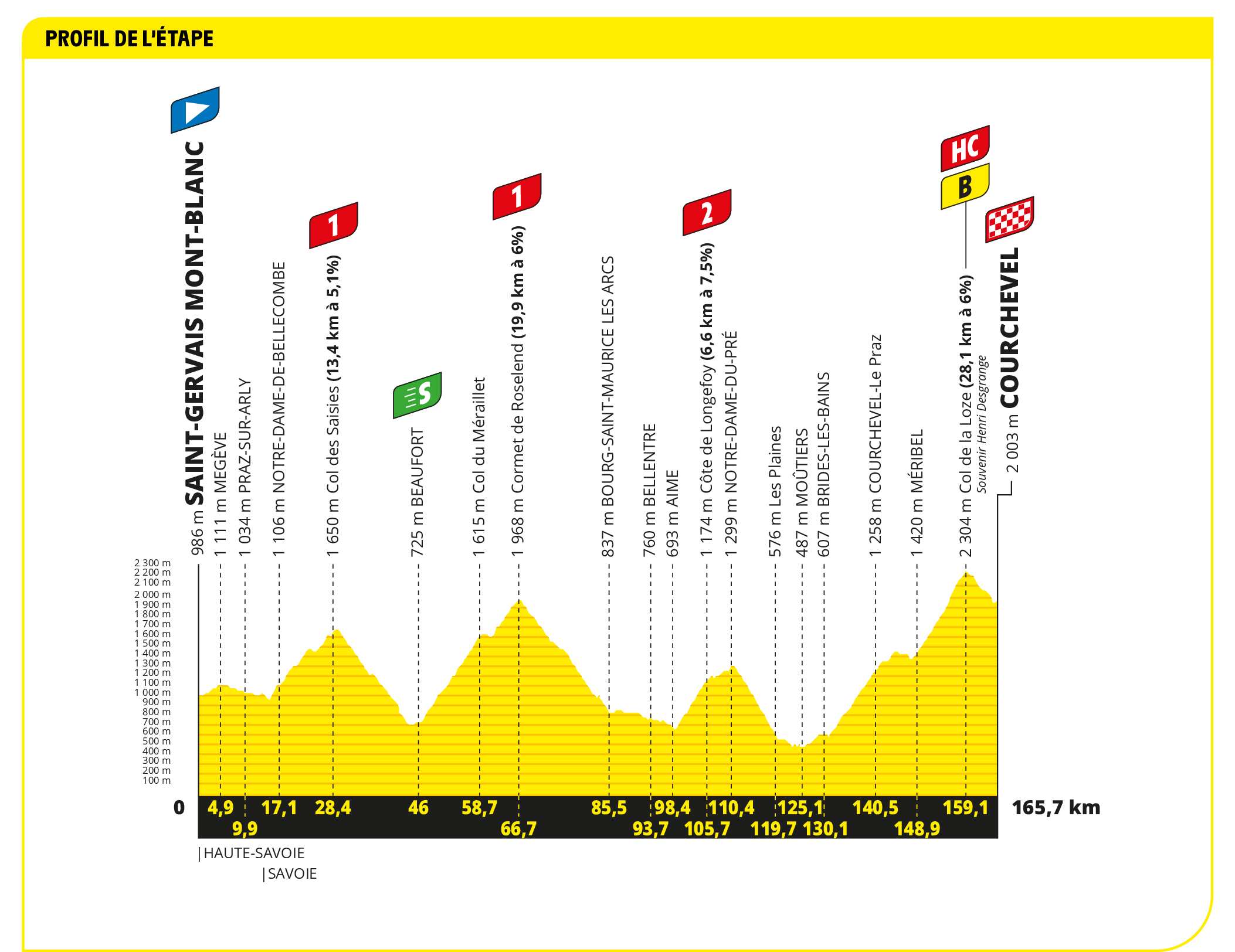
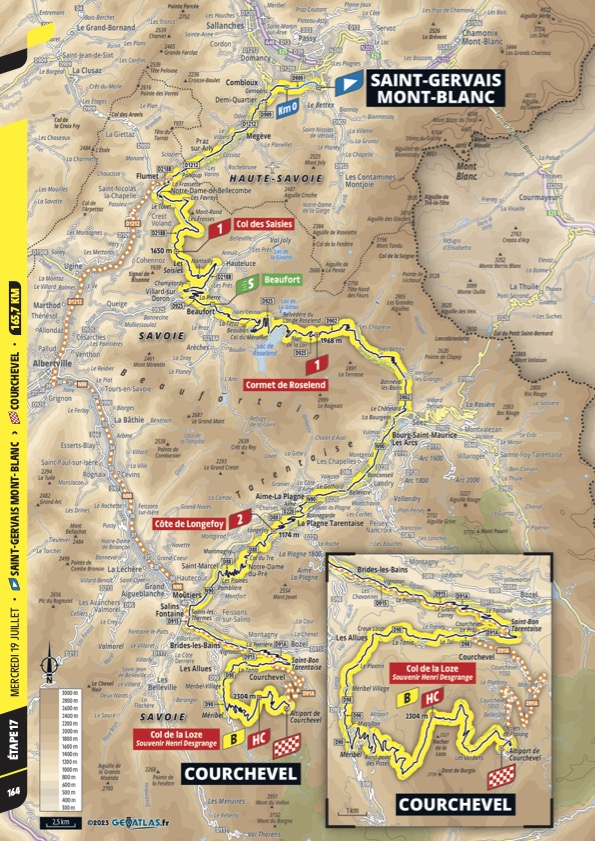
Alasdair Fotheringham has been reporting on cycling since 1991. He has covered every Tour de France since 1992 bar one, as well as numerous other bike races of all shapes and sizes, ranging from the Olympic Games in 2008 to the now sadly defunct Subida a Urkiola hill climb in Spain. As well as working for Cyclingnews, he has also written for The Independent, The Guardian, ProCycling, The Express and Reuters.
Latest on Cyclingnews
-
US Cyclocross Nationals: Makena Kellerman holds off Kaya Musgrave to win U23 women’s title
Pan-American U23 women's champion Mia Aseltine is third in Fayetteville, Arkansas -
US Cyclocross Nationals: Kira Mullins powers away on final lap to win women junior 17-18 title
Tessa Beebe takes second place, and Ada Watson is third in Fayetteville, Arkansas -
Tadej Pogačar eyes Paris-Roubaix victory and historic fifth Tour de France title as focal points of confirmed 2026 racing programme
World Champion chasing a fifth yellow jersey to equal the sport's greats alongside Miguel Induráin, Bernard Hinault, Eddy Merckx, and Jacques Anquetil -
Exact Cross Kortrijk: Niels Vandeputte beats Cameron Mason with final lap surge to win the Leiecross
Belgian take second victory of the season in a close race as Ryan Kamp finishes in third


